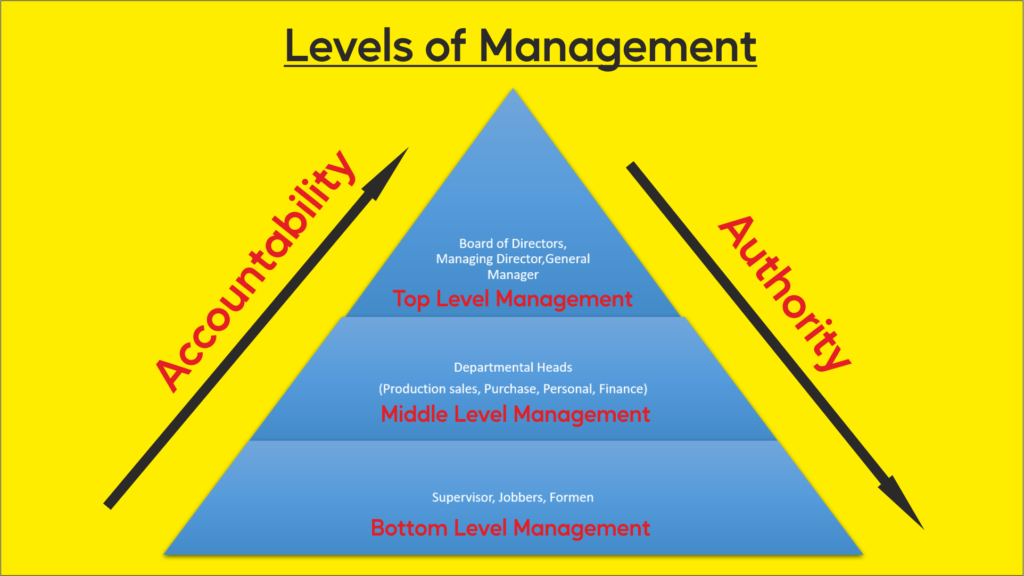Mastering Levels of Management: Your Guide to Class 12 Success in Gujarat Board Exams
Hey there, future management stars! Navigating the world of business? Gearing up for your Gujarat Board Class 12 exams? Then buckle up, because we're diving into the fascinating realm of management levels, specifically tailored for your success!

Remember those mind-boggling chapters on different management functions? Turns out, they're not just theoretical concepts! Understanding the three key levels of management – Top, Middle, and Bottom – can be your secret weapon on exam day and beyond. But before you whip out your highlighters, let's break it down:
1. Top Level Management:
Think CEOs, Managing Directors, Board of Directors – these are the big guns, the visionaries steering the ship. Their tasks? Setting overall goals, formulating policies, making strategic decisions, and ensuring the organization’s smooth sailing. In your exams, understanding their roles and responsibilities will help you analyze case studies and answer questions about organizational direction and leadership.
2. Middle Level Management:
Now, we enter the bridge between the top decks and the engine room. Meet the middle managers – heads of departments, divisional managers, and the like. They translate top-level plans into actionable steps, supervise teams, and ensure efficient operations. Mastering this level in your exams equips you to analyze operational challenges, resource allocation, and communication channels within an organization.
3. Bottom Level Management
These are the hands-on heroes – supervisors, team leaders, and foremen. They directly interact with employees, motivate them, and ensure tasks are completed on the ground. In your exams, understanding their role means analyzing employee-related issues, motivation techniques, and production efficiency.
Difference Between Levels of Management - Top, Middle, Bottom
Heading | Top-level | Middle level | Bottom level |
1)Administration & Management | More Management, | Less More Administration | Too less Management, Max. Administration |
2)Includes | BOD, MD, GM, CEO | Departmental heads & officers | Supervisors, jobbers, foremen |
3)Authority & Responsibility | More More Responsibility | Less Limited | Least Limited |
4)Number of members | Very less | More than | More than middle level |
5)competence (ability) | All-rounder | Special | Knowledge related to work |
6)Formation of objective & | Formulate policy and objective | Implement policy and objectives framed by top-level | Implement a policy of top and Middle Level |
7)Accountability | Towards shareholder, government, creditors & legal provisions | Towards top | Two words middle level |
8)Decisions | High decision | Low decision | Least decision risk |
So, how does this knowledge translate into exam success?
- Deepen your understanding of management concepts: By linking textbook terms like “planning,” “control,” and “motivation” to real-world scenarios within each level, you’ll grasp them like never before.
- Ace those case studies: Analyze business situations through the lens of different management levels, showcasing your comprehensive understanding.
- Answer questions strategically: Identify the level involved in specific scenarios and tailor your responses accordingly, demonstrating critical thinking and application of knowledge.
- Prepare for a brighter future: Understanding these levels opens doors to various career paths in management, equipping you with a valuable foundation for future endeavors.
Remember, management is not just about exams, it’s about understanding how organizations function. This knowledge empowers you to make informed decisions, navigate complex situations, and become a future leader, regardless of your chosen field.
